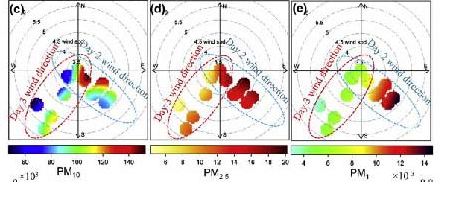Limits Revisited - A review of the limits to growth debate (24 page pdf, Tim Jackson and Robin Webster, Apr., 2016)
Today we review a report card on the 1972
Club of Rome report that looked ahead in 12 scenarios for the century ahead to examine the links between and among population, the economy, consumption of resources and pollution of the land, water and air. The indication that oil production would peak in 2015 if no corrective action were taken is strikingly accurate, given the shift now taking place in
renewable energy production. On the other hand the report did not take into account the following ecological processes in regulating the environment: climate change, ocean acidification, biodiversity loss, interference with global nitrogen and phosphorous cycles, ozone depletion, global freshwater use, land system change, atmospheric aerosol loading and chemical pollution. Of these, four have deteriorated into an uncertain future: biodiversity loss, damage to phosphorous and nitrogen cycles, climate change and land use.
Although there are hopeful signs that economic growth may be decoupling from the environment with respect to reduced carbon emissions though technological innovations, the social burden continues to get worse with more than 3 billion people trying to live on less than $2 per day, as underlined by the encyclical by Pope Francis. An uncontrolled collapse is still possible, not from consuming all remaining
natural resources but because of the degraded quality of those resources. As the report concludes: “an early policy response matters”.
 Key Quotes:
Key Quotes:
“
Limits Revisited outlines the contents of the Club of Rome’s report, traces the history of responses to it and dispels some of the myths surrounding it.”
“The 1972 report articulated for the first time the dynamic nature of our dependency on physical resources and on ecological systems. It illustrated the processes of ‘overshoot and collapse’ that can occur when these limits are approached and suggested that, without a shift in direction, adverse consequences would become obvious “within the next century””
“The
MIT team presented and analysed 12 scenarios, each with a different pattern of world development from 1900 to 2100…Only four scenarios avoided overshoot and collapse. These scenarios combined stabilising the human population with measures to restrict industrial output per person, as well as technological solutions like resource recycling and pollution control… One scenario which didn’t introduce these measures until 2000 managed to reached equilibrium, but not permanently…The diversion of more and more capital to extracting them [natural resources] leaves less for investment in industry, leading to industrial decline starting in about 2015. Around 2030, the
world population peaks and begins to decrease as the death rate is driven upwards by lack of food and health services.”
“A 2015 analysis of the remaining fossil fuel resources in China, USA, Canada and Australia, which includes
unconventional resources, suggests that overall oil production is in fact peaking already… World fossil fuel production is likely to peak in around 2025, it suggests, largely as a result of
Chinese coal production peaking. In short, unconventional oil seems to buy us several more decades before resource depletion starts to bite.”
“For each process, the team identified a ‘zone of uncertainty’ and a ‘danger zone’. Crossing over these thresholds could mean “non-linear, possibly abrupt and irreversible earth system responses” with disastrous consequences for society.. in 2015 found that four of these planetary boundaries had already been crossed. Biodiversity loss, damage to phosphorous and nitrogen cycles, climate change and land use have all slid into or beyond the ‘uncertainty zone’.”
“»In the last two years, carbon emissions from burning fossil fuels and industry flattened and even fell slightly, while
GDP increased by 3.4% and 3.1% respectively.… it’s essential to distinguish between what’s called relative decoupling – a decline in the material intensity of economic output – and absolute decoupling – an absolute fall in material use or emissions. Much of what is celebrated as decoupling is relative rather than absolute decoupling.”
“key issues:
- the economic implications of declining resource quality;
- the financial market implications of low-carbon investment strategies;
- the political implications of the need for precautionary, longterm thinking;
- the social implications of inequality in the distribution of available resources;
- the macroeconomic implications of secular stagnation or degrowth.”
















































